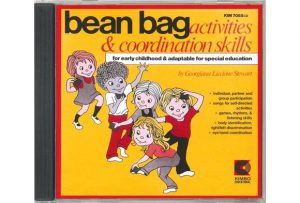
“If a child can’t learn the way we teach, than maybe we should teach the way they learn” ~ Ignacio Estrada
Sensory Storytime is a fun, interactive, educational storytime designed for preschool age children with autism and/or sensory challenges. It involves books, songs, movement and therapeutic play that incorporate the five senses.
Sensory Storytime differs from a regular storytime in the following ways:
- The use of a picture schedule to manage transitions
- The availability of fidget toys to enhance focus and calm
- One to two reciprocal activities to foster social interaction
- A flexible approach which allows sensory seekers to roam
- Educube chairs to provide physical structure
- Limited to no more than 10 children per session
Picture Schedule

Picture schedules are used in Sensory Storytime to aid children in managing transitions between activities or tasks. Each picture illustrates an element in the storytime; once an element is completed, the picture is removed from the board. Using the pictures helps the children anticipate change, which minimizes their anxiety and provides much-needed structure.
Educube Chairs


Educube chairs are used in Sensory Storytime to support children with sensory integration issues. Children with autism or sensory integration disorder often have difficulty with proprioception.
Proprioception (or kinesthesia) is the sense though which we perceive the position and movement of our body, including our sense of equilibrium and balance, senses that depend on the notion of force (Jones, 2000).
From: Psychology of Learning and Motivation, 2013
Educube chairs encase a child’s body, creating a physical boundary that facilitates relaxation and muscle control. These chairs are also helpful for children with Cerebral Palsy or Down’s Syndrome.
Fidget Toys

Fidget toys are made available to provide sensory/tactile stimulation to calm the senses and reduce anxiety.
Winter Session – 1st Meeting
Theme: COLORS!
Stories
The books chosen for Sensory Storytime are the same books we would choose for a toddler or preschool storytime. They need to be colorful with simple text and a well-defined concept or a linear, easy-to-follow story. If we have a group of children who have difficulty sitting through even a few pages, we can paraphrase the text or use props such as handheld puppets to encourage engagement.
Listed below are two books that are easily adapted for Sensory Storytime. Bold, bright illustrations and repetition make them excellent picks! Click onto each image to find the book in our library catalog.
Flannelboard
Little Mouse, Little Mouse
Little mouse, little mouse are you in the
red, green, brown, yellow…HOUSE?
We ask the children to cover their eyes as we place the mouse behind one of the houses. They then get the opportunity to guess which color house the mouse is hiding behind. Anticipation, rhyme, guessing, and reciprocal interaction make this a particularly good choice for Sensory Storytime! Since it is interactive, it gives the children who need to move around the room an opportunity to come forward and touch the flannel and remove the chosen house with the help of a parent or the storytime leader.

Reciprocal and/or Tactile Songs & Activities
Hello Everybody How Are You?
Hello everybody, how are you? How are you?
Hello there ________ (child’s name)
How are you today?
Roll the Ball Game
(reiprocol activity using a textured ball)
(Sing to tune of Row, Row, Row Your Boat)
Roll, roll, roll the ball (roll ball to specific child while singing)
Roll the ball to ________ (child’s name)
(Repeat child’s name 3X) ________ ________ _______,
Roll the ball to me (wait for child to roll the ball back with help from parent/caregiver)
Bean Bag Rock
(fine and gross motor skill activity using weighted bean bags)
- Weighted bean bags are passed out to each child.

- We generally use the Bean Bag Rock song/activity which is #3 on the bean bag activities & coordination skills CD (see below).

- Children follow the song’s instructions with help from a parent/caregiver or the storytime leader.
Bean Bag Rock (abbreviated lyrics)
Shake, shake, shake your beanbag
Come on, come on shake your beanbag.
Shake, shake, shake your beanbag
Shake your beanbag, don’t let it drop,
Let’s all do the beanbag rock.
- The song continues with the children being instructed to place the beanbag on various body parts (knee, head, toe, elbow) and also asks the children to hold the beanbag up high and down low.
- The movements help with body identification, developing fine and gross motor skills and with following directions.
Closing Songs
We try to maintain consistency with the songs and activities we use in our Sensory Storytime sessions. The repetition builds familiarity and provides the predictability children with autism require. Sessions generally last 5-6 weeks with one meeting a week.
Two universally known songs that are always big hits are Twinkle, Twinkle Little Star and Itsy Bitsy Spider. The finger movements used with the songs help build fine motor skills and enhance focus.
Click here for video: Twinkle, Twinkle Little Star
Click here for video: Itsy Bitsy Spider
Goodbye Friends (in sign)
Sung to the tune of Goodnight Ladies
Goodbye friends, goodbye friends, goodbye friends
It’s time to say goodbye. Click here for video: Goodbye Friends
FREE PLAY
Each Sensory Storytime ends with roughly 20 minutes of free play. For free play, we pull out some therapeutic play materials to facilitate sensory and interactive play. See the photographs below for examples of what we use:



Extend the Fun and Learning
Extend the fun at home by checking out one of our Sensory Storytime kits. Each kit is themed and contains 2-3 books, a sensory toy and an activity and/or music CD. The kits are housed at Lamanda Park Branch Library but can be placed on hold and sent to a Pasadena Public Library location of your choice. Click here for a list of themes: Sensory Storytime Kit.

